
漢德百科全書 | 汉德百科全书
 BRICS summit
BRICS summit
 Egypt
Egypt
 Ethiopia
Ethiopia
 Brazil
Brazil
 BRICS summit
BRICS summit
 China
China

 Hand in Hand
Hand in Hand
 India
India
 Iran
Iran
 Russia
Russia
 South Africa
South Africa
 United Arab Emirates
United Arab Emirates

 Important International Organizations
Important International Organizations

 Economy and trade
Economy and trade

金砖国家,简称金砖国,原称金砖四国(英语:BRIC)、金砖五国(英语:BRICS),现指九个主要的新兴市场国家,分别为巴西、俄罗斯、印度、中华人民共和国、南非、埃及、埃塞俄比亚、伊朗及阿拉伯联合酋长国。
金砖国家人口和国土面积在全球占有重要份额,是世界经济增长的主要动力之一。[1]组织中国家的共同点为领土面积大、人口多、发展中国家以及被认为有一定甚至巨大的发展潜力。所以可以说在可见的未来里,这个组织或者组织中某个或多个国家会一定程度上的影响甚至领导全球经济。
2010年12月23日,南非作为正式成员加入金砖国家。2023年金砖国家峰会后,南非总统宣布邀请阿根廷(后撤回加入申请)、埃及、埃塞俄比亚、伊朗、沙特阿拉伯(后搁置加入申请)、阿拉伯联合酋长国成为金砖国家的正式成员[2]。
BRICS is the acronym coined by British Economist Jim O’Neill meant for an association of five major emerging national economies: Brazil, Russia, India, China and South Africa. Originally the first four were grouped as "BRIC" (or "the BRICs"), before the induction of South Africa in 2010.[4] The BRICS members are known for their significant influence on regional affairs; all are members of G20.[5] Since 2009, the BRICS nations have met annually at formal summits. China hosted the 9th BRICS summit in Xiamen on September 2017,[6] while South Africa will do so for the 10th BRICS summit in July 2018. The term does not include countries such as South Korea, Mexico and Turkey for which other acronyms and group associations were later created.
In 2015, the five BRICS countries represent over 3.1 billion people, or about 41% of the world population; four out of five members (excluding South Africa at #24) are in the top 10 of the world by population. As of 2018, these five nations have a combined nominal GDP of US$18.6 trillion, about 23.2% of the gross world product, combined GDP (PPP) of around US$40.55 trillion (32% of World's GDP PPP) and an estimated US$4.46 trillion in combined foreign reserves.[7][8] Overall the BRICS are forecasted to expand 4.6% in 2016, from an estimated growth of 3.9% in 2015. The World Bank expects BRICS growth to pick up to 5.3% in 2017.[9] The BRICS have received both praise and criticism from numerous commentators.[10][11][12] Bilateral relations among BRICS nations have mainly been conducted on the basis of non-interference, equality, and mutual benefit.[13]
BRICS est un acronyme anglais pour désigner un groupe de cinq pays qui se réunissent depuis 2011 en sommets annuels : Brésil, Russie, Inde, Chine et Afrique du Sud (en anglais : Brazil, Russia, India, China, South Africa).
Avant l'ajout de l'Afrique du Sud en 2011, le groupe était appelé BRIC, terme initial inventé en 2001 et qui a conduit à l'organisation des premiers sommets à quatre pays en 2009. Rarement utilisés, les équivalents français de cet acronyme - après l'adhésion de l'Afrique du Sud - sont ABRIC (Afrique du Sud, Brésil, Russie, Inde et Chine1), BRASIC ou encore BRICA2.
L'acronyme BRICSAM (en anglais : Brazil, Russia, India, China, South Africa, Mexico) est également utilisé pour y adjoindre le Mexique, sans qu'il ne soit membre du groupe.
Il BRICS in economia internazionale è un'associazione di cinque paesi tra le maggiori economie emergenti. Il nome è l'acronimo delle iniziali dei cinque stati:
Tali economie si propongono di costruire un sistema commerciale globale attraverso accordi bilaterali che non siano basati esclusivamente sul petrodollaro. Il termine ha avuto origine dal precedente BRIC, con l'aggiunta della S relativa al Sudafrica.
En economía internacional,1 se emplea la sigla BRICS para referirse conjuntamente a Brasil, Rusia, India, China y Sudáfrica,2 aunque en este artículo se hará más referencia al BRIC, que excluye este último país, el que se unió al grupo en 2011. En términos generales, BRICS es el acrónimo de una asociación económica-comercial de las cinco economías nacionales emergentes más importantes del mundo. Los BRICS son considerados el paradigma de la cooperación Sur-Sur, aunque recientemente esta interpretación fue puesta en cuestión dadas las contradicciones entre los intereses de China y los demás miembros.3
Todas estas naciones tienen en común una gran población (China e India por encima de los mil cien millones, Brasil y Rusia por encima de los ciento cuarenta millones), un enorme territorio (casi 38,5 millones km²), lo que les proporciona dimensiones estratégicas continentales, una gigantesca cantidad de recursos naturales y, lo más importante, las enormes cifras que han presentado de crecimiento de su producto interno bruto (PIB) y de participación en el comercio mundial en los últimos años, lo que los hace atractivos como destino de inversiones.4
México y Corea del Sur son los únicos países comparables a los BRIC, pero sus economías se excluyeron debido a que ya son miembros de la OCDE.5 Estos países, Brasil, China, India y Sudáfrica, exceptuando a Rusia que pertenece al G-8, también forman parte del G-5. Argentina, en tanto, fue invitada a la cumbre de Fortaleza, junto a los miembros de la Unión de Naciones Suramericanas realizada en julio de 2014.
Em economia, BRICS é um acrônimo que se refere aos países membros fundadores (o grupo BRIC: Brasil, Rússia, Índia e China), que juntos formam um grupo político de cooperação. Em 14 de abril de 2011,[1] o "S" foi oficialmente adicionado à sigla BRIC para formar o BRICS, após a admissão da África do Sul (em inglês: South Africa) ao grupo.[2][3][4] Os membros fundadores e a África do Sul estão todos em um estágio similar de mercado emergente, devido ao seu desenvolvimento econômico. É geralmente traduzido como "os BRICS" ou "países BRICS" ou, alternativamente, como os "Cinco Grandes".
Apesar de o grupo ainda não ser um bloco econômico ou uma associação de comércio formal, como no caso da União Europeia,[5] existem fortes indicadores de que os quatro países do BRIC têm procurado formar um "clube político" ou uma "aliança", e assim converter "seu crescente poder econômico em uma maior influência geopolítica."[6][7] Desde 2009, os líderes do grupo realizam cúpulas anuais.[8]
A sigla (originalmente "BRIC") foi criada por Jim O'Neill em um estudo de 2001 intitulado "Building Better Global Economic BRICs".[9][10][11] Desde então, a sigla passou a ser amplamente usada como um símbolo da mudança no poder econômico global, distanciando-se das economias desenvolvidas do G7 em relação ao mundo em desenvolvimento.
De acordo com um artigo publicado em 2005, o México e a Coreia do Sul seriam os únicos outros países comparáveis aos BRICS, mas suas economias foram inicialmente excluídas por serem consideradas mais desenvolvidas, uma vez que já eram membros da Organização para a Cooperação e Desenvolvimento Econômico.[12] As relações bilaterais entre os países dos BRICS tem sido conduzidas principalmente com base nos princípios de não-interferência, igualdade e benefício mútuo.[13]
ब्रिक्स (BRICS) उभरती राष्ट्रीय अर्थव्यवस्थाओं के एक संघ का शीर्षक है। इसके घटक राष्ट्र ब्राज़ील, रूस, भारत, चीन और दक्षिण अफ्रीका हैं। इन्हीम देशों के अंग्रेज़ी में नाम के प्रथमाक्षरों B, R, I, C व S से मिलकर इस समूह का यह नामकरण हुआ है।[1] मूलतः, २०१० में दक्षिण अफ्रीका के शामिल किए जाने से पहले इसे "ब्रिक" के नाम से जाना जाता था। रूस को छोडकर[2], ब्रिक्स के सभी सदस्य विकासशील या नव औद्योगीकृत देश हैं जिनकी अर्थव्यवस्था तेजी से बढ़ रही है। ये राष्ट्र क्षेत्रीय और वैश्विक मामलों पर महत्वपूर्ण प्रभाव डालते हैं। वर्ष २०१३ तक, पाँचों ब्रिक्स राष्ट्र दुनिया के लगभग 3 अरब लोगों का प्रतिनिधित्व करते हैं और एक अनुमान के अनुसार ये राष्ट्र संयुक्त विदेशी मुद्रा भंडार में ४ खरब अमेरिकी डॉलर का योगदान करते हैं। इन राष्ट्रों का संयुक्त सकल घरेलू उत्पाद १५ खरब अमेरिकी डॉलर का है।[3] वर्तमान में, दक्षिण अफ्रीका ब्रिक्स समूह की अध्यक्षता करता है।
БРИКС (англ. BRICS — сокращение от Brazil, Russia, India, China, South Africa) — группа из пяти стран: Бразилия, Россия, Индия, Китай, Южно-Африканская Республика.
Сокращение БРИК (BRIC) было впервые предложено аналитиком Джимом О’Нилом в ноябре 2001 года в аналитической записке банка «Goldman Sachs» Building Better Global Economic BRICs (Кирпичи для новой экономики)[1][2]. До 2011 года по отношению к организации использовалась аббревиатура БРИК. В связи с присоединением ЮАР к БРИК 18 февраля 2011 года, по заявлению индийского министра финансов с этого времени группа стала носить название BRICS[3].
Последовательность букв в слове определяется не только благозвучием, но и тем, что само слово в английской транскрипции BRICS очень похоже на английское слово bricks — «кирпичи»[4], таким образом, данный термин используется в качестве обозначения группы стран, за счёт роста которых во многом будет обеспечиваться будущий рост мировой экономики.
Организация была основана в июне 2006 года, в рамках Петербургского экономического форума (ПЭФ) с участием министров экономики Бразилии, России, Индии, Китая. Помимо саммитов, встречи проходят на уровне глав МИД, министров финансов и др.
Эксперты не предполагали наличия координации экономических политик между странами БРИК. Тем более не предполагалось, что страны БРИК образуют некий экономический блок или официальную торговую ассоциацию, как Европейский союз. Однако со временем появились признаки, что «четыре страны БРИК стремятся сформировать политический клуб» или «союз», и таким образом преобразовать «свою растущую экономическую власть в большее геополитическое „влияние“». С сентября 2006 года началось налаживание политических связей в рамках БРИК: во время 61-й сессии ООН была проведена встреча министров иностранных дел четырёх стран. Главы государств БРИК впервые встретились 9 июля 2008 года в Тояко-Онсэн (Хоккайдо, Япония) в рамках 34-го саммита G8 и договорились о проведении полноформатного саммита, который состоялся в Екатеринбурге 16 июня 2009 года[5]. [источник не указан 1284 дня]
 *Track and field athletics
*Track and field athletics
 4x100 m Men
4x100 m Men
 BRICS summit
BRICS summit
 Commonwealth of Nations
Commonwealth of Nations
 Leichtathletik-Weltmeisterschaften
Leichtathletik-Weltmeisterschaften
 2001 Edmonton
2001 Edmonton

 Party and government
Party and government
 Group of the twenty most important industrial and emerging countries
Group of the twenty most important industrial and emerging countries

 Party and government
Party and government
 BRICS
BRICS
 South Africa
South Africa


 Atomic bomb
Atomic bomb
 BRICS summit
BRICS summit
 Commonwealth of Nations
Commonwealth of Nations

 History
History
 M 1500 - 2000 AD
M 1500 - 2000 AD

 History
History

 History
History

 History
History
 N 2000 - 2100 AD
N 2000 - 2100 AD
 History of India
History of India
 India
India

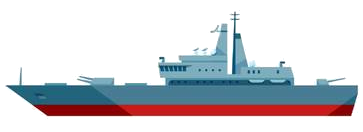
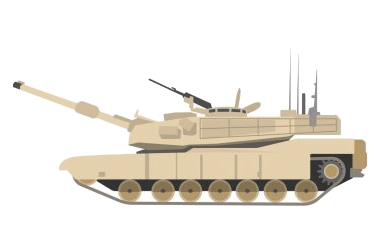
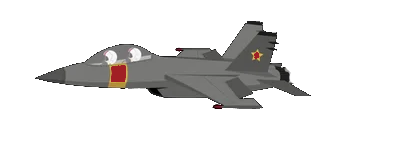
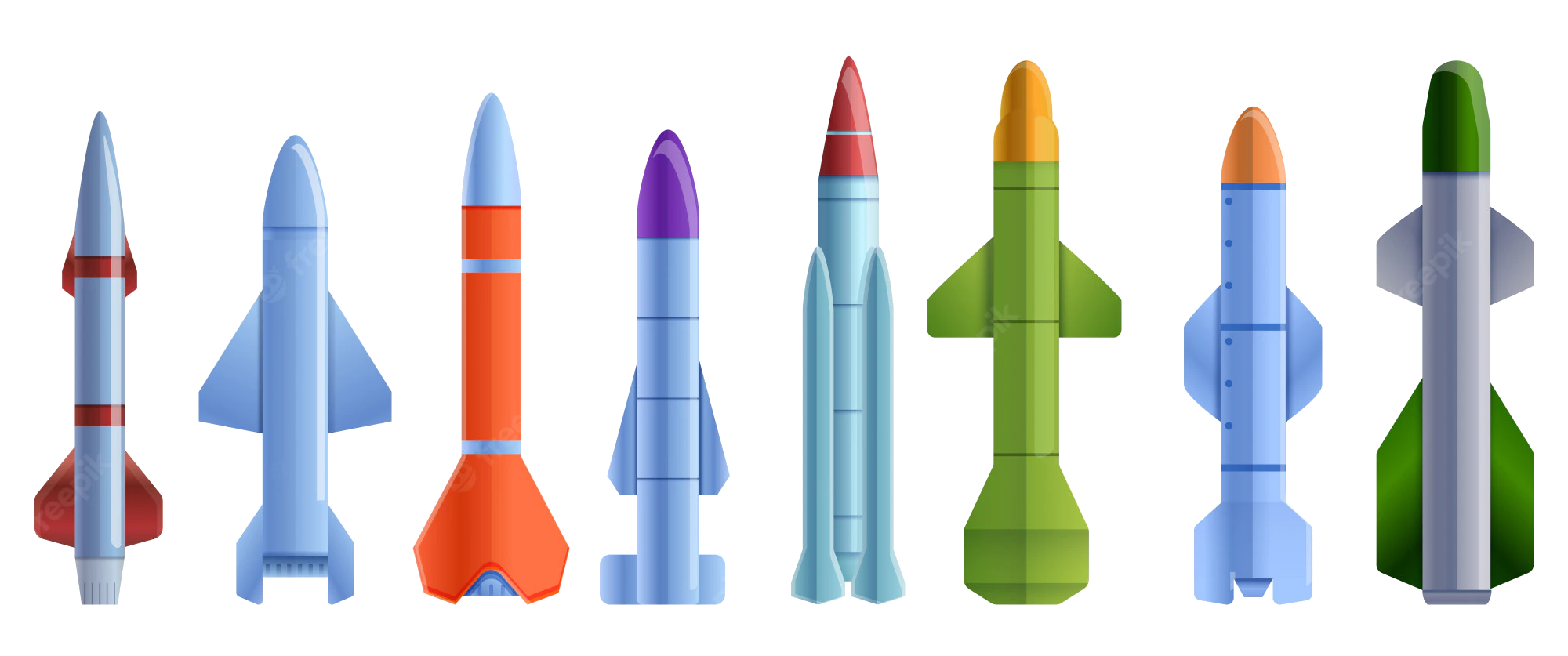 Military, defense and equipment
Military, defense and equipment
 Nuclear Weapon
Nuclear Weapon

 Party and government
Party and government
 Group of the twenty most important industrial and emerging countries
Group of the twenty most important industrial and emerging countries

 Party and government
Party and government
 BRICS
BRICS
 Silk road
Silk road
 Shanghai Cooperation Organization
Shanghai Cooperation Organization

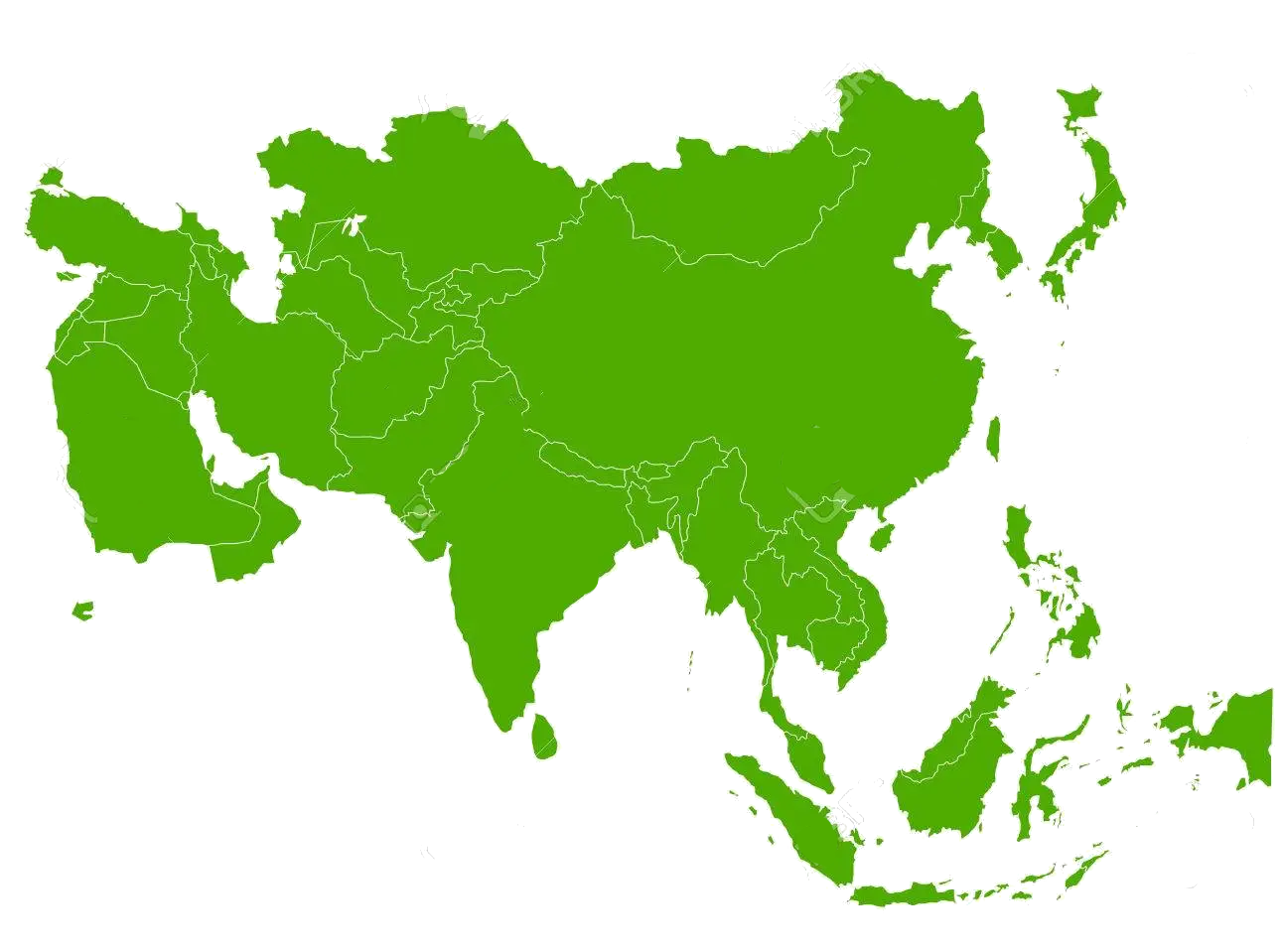 States of Asia
States of Asia

Indien ist ein Staat in Südasien, der den größten Teil des indischen Subkontinents umfasst. Indien ist eine Bundesrepublik, die von 29 Bundesstaaten gebildet wird und außerdem sieben bundesunmittelbare Gebiete umfasst. Der Eigenname der Republik lautet in den beiden landesweit gültigen Amtssprachen Bharat Ganarajya (Hindi) und Republic of India (Englisch). Die moderne demokratische und säkulare indische Republik besteht seit 1949 und seit 1950 gilt die Verfassung Indiens.
Der Himalaya bildet die natürliche Nordgrenze Indiens, im Süden umschließt der Indische Ozean das Staatsgebiet. Indien grenzt an Pakistan, das chinesische Autonome Gebiet Tibet, Nepal, Bhutan, Myanmar (Birma) und Bangladesch. Weitere Nachbarstaaten im Indischen Ozean sind Sri Lanka und die Malediven. Hinsichtlich der Landesfläche ist Indien das flächenmäßig siebtgrößte Land der Erde.
Das Gebiet Indiens ist mindestens seit der bronzezeitlichen Indus-Hochkultur zivilisiert. Der indische Staat ist mit über 1,3 Milliarden Einwohnern (2016)[6] nach der Volksrepublik China (fast 1,4 Mrd.)[7] das zweitbevölkerungsreichste Land der Erde und somit die bevölkerungsreichste Demokratie der Welt.[8] Bei gleichbleibend hohem Bevölkerungswachstum könnte Indien schon im Jahr 2020 China überholen. Durch fortschreitende Modernisierung, Bildung, Wohlstand und Urbanisierung sinkt die Geburtenrate jedoch bereits. Hauptstadt Indiens ist Neu-Delhi, Teil der Metropole Delhi; weitere Ballungsräume sind auch Mumbai, Kalkutta, Chennai, Bangalore, Hyderabad, Ahmedabad und Pune.
Die indische Gesellschaft wird trotz verfassungsmäßiger Religionsfreiheit vom religiösen hierarchischen Kastensystem bestimmt. Die mit Abstand größte Religionsgruppe sind die Hindus, gefolgt von Muslimen, Christen und den historisch aus Indien stammenden Sikhs, Buddhisten und Jaina. Laut Index der menschlichen Entwicklung (HDI) erreicht Indien den Status „mittlere menschliche Entwicklung“ und Platz 131 von 187 weltweit (2016, im Vergleich erreicht die VR China Platz 90).[9] Wirtschaftlich gilt Indien als Schwellenland und gehört zu den O5- und BRICS-Staaten und der Gruppe der zwanzig wichtigsten Industrie- und Schwellenländer (G20). Indien ist trotz seines noch niedrigen Pro-Kopf-Einkommens bereits die drittgrößte bzw. sechstgrößte Wirtschaftsmacht der Welt (kaufkraftbereinigt bzw. nominell) und war 2015 erstmals die am schnellsten wachsende Volkswirtschaft der G20-Gruppe.
印度共和国(印地语:भारत गणराज्य,Bhārat Ganarājya;英语:Republic of India),通称印度(印地语:भारत;英语:India),是位于南亚印度次大陆上的国家,印度面积位列世界第七,印度人口众多,位列世界第二,截至2018年1月印度拥有人口13.4亿,仅次于中国人口的13.8亿,人口成长速度比中国还快,预计近年将交叉。是亚洲第二大也是南亚最大的国家,面积328万平方公里(实际管辖),同时也是世界第三大(购买力平价/PPP)经济体。
印度并非单一民族及文化的国家。印度的民族和种族非常之多,有“民族大熔炉”之称,其中印度斯坦族占印度总人口的大约一半,是印度最大的民族。印度各个民族都拥有各自的语言,仅宪法承认的官方语言就有22种之多,其中印地语和英语被定为印度共和国的联邦官方语言[5],并且法院裁定印度没有国语。[9][10]英语作为共同语言使用在印度非常流行,尤其在南印地位甚至高于印地语,但受限于教育水准,普通民众普遍不精通英语。另外,印度也是一个多宗教多信仰的国家,世界4大宗教其中的佛教和印度教都源自印度。大部分印度人信仰印度教。伊斯兰教在印度也有大量信徒,是印度的第二大宗教,信教者约占印度的14.6%(截至2011年,共有约1亿7千7百万人)。伊斯兰教是在公元8世纪随着阿拉伯帝国的扩张而传播到印度的。公元10世纪后,北印的大多数王朝统治者都是信奉伊斯兰教的,特别是莫卧儿王朝。印度也是众多正式和非正式的多边国际组织的成员,包括世界贸易组织、英联邦、金砖五国、南亚区域合作联盟和不结盟运动等。
以耕种农业、城市手工业、服务业以及其支撑产业为主的部分行业已经相对取得了进展。除了民族文化与北方地形的丰富使印度旅游业颇受欢迎之外,由于时差,大批能说英语的人才也投入外包行业(即是外国企业把客户咨询,电话答录等等服务转移到印度)。另一方面,宝莱坞电影的文化输出在英语圈乃至全球的影响力不亚于世界主流。同时印度还是很多专利过期药物的生产地,以低价格提供可靠的医疗。近年来,印度政府还大力投资本国高等教育,以利于在科学上与国际接轨,例如自主太空研究、南亚半岛生态研究等等。印度最重要的贸易伙伴是美国、欧盟、日本、中国和阿拉伯联合酋长国。
インドは、南アジアに位置し、インド洋の大半とインド亜大陸を領有する連邦共和制国家である。ヒンディー語の正式名称भारत गणराज्य(ラテン文字転写: Bhārat Gaṇarājya、バーラト・ガナラージヤ、英語: Republic of India)を日本語訳したインド共和国とも呼ばれる。
西から時計回りにパキスタン、中華人民共和国、ネパール、ブータン、バングラデシュ、ミャンマー、スリランカ、モルディブ、インドネシアに接しており、アラビア海とベンガル湾の二つの海湾に挟まれて、国内にガンジス川が流れている。首都はニューデリー、最大都市はムンバイ。
1947年にイギリスから独立。インダス文明に遡る古い歴史、世界第二位の人口を持つ。国花は蓮、国樹は印度菩提樹、国獣はベンガルトラ、国鳥はインドクジャク、国の遺産動物はインドゾウである。
インドは南アジア随一の面積と世界第2位の人口を持つ大国である。12億人を超える国民は、多様な民族、言語、宗教によって構成されている。連邦公用語はヒンディー語、他にインド憲法で公認されている言語が21あり主な言語だけで15を超えるため、インドの紙幣には17の言語が印刷されている。議会制民主主義国家であり、有権者数8億人と世界最大である[5]。州政府が一定の独立性を持っているため、各州に中央政府とは別に政府があり大臣がいる。
労働力人口の3分の2が農業に従事する一方、製造業とサービス業が急速に成長している。国民の識字率は74.04%である。ヒンドゥー教徒が最も多く、イスラム教、シーク教がこれに次ぐ。カースト制度による差別は憲法で禁止されているが、今でも農村部では影響は残っている。
アジア開発銀行はインドの中間層が向こう15年間で人口の7割に達するとしている[6]。
India (IAST: Bhārat), also known as the Republic of India (IAST: Bhārat Gaṇarājya),[18][e] is a country in South Asia. It is the seventh largest country by area and with more than 1.3 billion people, it is the second most populous country and the most populous democracy in the world. Bounded by the Indian Ocean on the south, the Arabian Sea on the southwest, and the Bay of Bengal on the southeast, it shares land borders with Pakistan to the west;[f] China, Nepal, and Bhutan to the northeast; and Bangladesh and Myanmar to the east. In the Indian Ocean, India is in the vicinity of Sri Lanka and the Maldives, while its Andaman and Nicobar Islands share a maritime border with Thailand and Indonesia.
The Indian subcontinent was home to the urban Indus Valley Civilisation of the 3rd millennium BCE. In the following millennium, the oldest scriptures associated with Hinduism began to be composed. Social stratification, based on caste, emerged in the first millennium BCE, and Buddhism and Jainism arose. Early political consolidations took place under the Maurya and Gupta empires; later peninsular Middle Kingdoms influenced cultures as far as Southeast Asia. In the medieval era, Judaism, Zoroastrianism, Christianity, and Islam arrived, and Sikhism emerged, all adding to the region's diverse culture. Much of the north fell to the Delhi Sultanate; the south was united under the Vijayanagara Empire. The economy expanded in the 17th century in the Mughal Empire. In the mid-18th century, the subcontinent came under British East India Company rule, and in the mid-19th under British crown rule. A nationalist movement emerged in the late 19th century, which later, under Mahatma Gandhi, was noted for nonviolent resistance and led to India's independence in 1947.
In 2017, the Indian economy was the world's sixth largest by nominal GDP[19] and third largest by purchasing power parity.[15] Following market-based economic reforms in 1991, India became one of the fastest-growing major economies and is considered a newly industrialised country. However, it continues to face the challenges of poverty, corruption, malnutrition, and inadequate public healthcare. A nuclear weapons state and regional power, it has the second largest standing army in the world and ranks fifth in military expenditure among nations. India is a federal republic governed under a parliamentary system and consists of 29 states and 7 union territories. A pluralistic, multilingual and multi-ethnic society, it is also home to a diversity of wildlife in a variety of protected habitats.
L'Inde, officiellement la république de l'Inde4, en hindi : भारत (Bhārat) et भारत गणराज्य (Bhārat Gaṇarājya), est un pays d'Asie du Sud qui occupe la majeure partie du sous-continent indien. Sa capitale est New Delhi. L'Inde est le deuxième pays le plus peuplé et le septième pays le plus grand du monde. Le littoral indien s'étend sur plus de sept mille kilomètres. Le pays a des frontières communes avec le Pakistan à l'ouest, la Chine, le Népal, et le Bhoutan au nord et au nord-est, le Bangladesh et la Birmanie à l'est. Sur l'océan Indien, l'Inde est à proximité des Maldives au sud-ouest, du Sri Lanka et de l'Indonésie au sud-est. L'Inde revendique également une frontière avec l'Afghanistan au nord-ouest. L'Inde dispose de l'arme nucléaire depuis 1974 après avoir fait des essais officiels.
L'Inde est un foyer de civilisations parmi les plus anciennes du monde, la civilisation de la vallée de l'Indus s'y est développée dès 3000 av. J.-C. Le sous-continent indien a abrité de vastes empires et est présent sur les routes commerciales dès l'Antiquité. L'Inde est la terre de naissance de quatre religions majeures — l'hindouisme, le jaïnisme, le bouddhisme et le sikhisme — alors que le zoroastrisme, le christianisme et l'islam s'y sont implantés durant le Ier millénaire. L'Inde est aujourd'hui un pays très divers sur le plan religieux, linguistique et culturel.
Le pays a été progressivement annexé par la Compagnie anglaise des Indes avant de passer sous le contrôle du Royaume-Uni au XIXe siècle. L'Inde devient indépendante en 1947 après une lutte marquée par la résistance non-violente du Mohandas Karamchand Gandhi. Le pays est depuis 1950 une république parlementaire fédérale considérée comme la démocratie la plus peuplée au monde.
En 2017, l'économie indienne est la sixième du monde en PIB nominal et la troisième en PIB à parité de pouvoir d'achat. L'Inde, pays à forte croissance économique, est considéré comme un nouveau pays industrialisé. Cependant certains problèmes comme la pauvreté, l'analphabétisme ou la corruption restent très importants.
L'India (hindi: भारत Bhārat), ufficialmente Repubblica dell'India (hindi: भारत गणराज्य Bhārat Gaṇarājya), è uno Stato federale dell'Asia meridionale, con capitale Nuova Delhi.
È il settimo Stato per estensione geografica al mondo (3 287 263 km²) e il secondo più popolato, con 1 335 250 000 abitanti (censimento 2017).[8] È bagnato dall'oceano Indiano a sud, dal mar Arabico a ovest e dal golfo del Bengala a est. Possiede una linea costiera che si snoda per 7.517 km.[9] Confina con il Pakistan a ovest,[10] Cina, Nepal e Bhutan a nord-est, Bangladesh e Birmania a est. Suoi vicini prossimi, separati dell'oceano Indiano, sono lo Sri Lanka a sud-est e le Maldive a sud-ovest.
Sede della civiltà della valle dell'Indo e regione di rotte commerciali storiche e di vasti imperi, il subcontinente indiano è stato identificato con il suo commercio e la ricchezza culturale per gran parte della sua lunga storia.[11] Quattro grandi religioni del mondo (l'induismo, il buddismo, il giainismo e il sikhismo) sono nate qui, mentre lo zoroastrismo, l'ebraismo, il cristianesimo e l'islam arrivarono entro il I millennio d.C. dando forma nella regione a una grandissima diversità culturale. Gradualmente annessa alla Compagnia britannica delle Indie orientali dai primi decenni del XVIII secolo e colonizzata dal Regno Unito dalla metà del XIX secolo, l'India è diventata un moderno Stato nazionale nel 1947, dopo una lotta per l'indipendenza che è stata caratterizzata da una diffusa resistenza non violenta guidata da Gandhi.
L'India è la dodicesima più grande economia del mondo in termini nominali e la quarta in termini di potere d'acquisto. Riforme economiche hanno trasformato lo Stato nella seconda economia a più rapida crescita[12] (è uno dei cinque Paesi a cui ci si riferisce con l'acronimo BRICS),[13] ma nonostante ciò il Paese soffre ancora di alti livelli di povertà, analfabetismo e malnutrizione, oltre ad avere un sistema sociale basato sulle caste. Società pluralistica, multilingue e multietnica, l'India è inoltre ricca sul piano naturale, con un'ampia diversità di fauna selvatica e di habitat protetti.
La India8 ―oficialmente República de la India (en hindi, भारत गणराज्य, Bhārat Gaṇarājya; en inglés, Republic of India)― es un país soberano ubicado en el sur de Asia. Con sus más de 1240 millones de habitantes, es el segundo país del mundo por población ―después de la República Popular China (con 1395 millones). Su superficie es de 3 287 263 km²,3 lo cual lo ubica en el séptimo lugar entre los países más extensos del planeta. Limita con el océano Índico al sur, con el mar Arábigo al oeste y con el golfo de Bengala al este, a lo largo de una línea costera de más de 7517 kilómetros.9
La India también limita con Pakistán al oeste;10 al norte con China, Nepal y Bután y al este con Bangladés y Birmania. Además, la India se encuentra cerca de las islas de Sri Lanka, Maldivas e Indonesia. Su capital es Nueva Delhi y su ciudad más poblada es Bombay.
Hogar de la cultura del valle del Indo y una región histórica por sus rutas comerciales y grandes imperios, el subcontinente indio fue identificado por su riqueza cultural y comercial en la mayor parte de su larga historia.11 Cuatro de las religiones más importantes del mundo, el hinduismo, el budismo, el jainismo y el sijismo se originaron allí, mientras que otras religiones como el zoroastrismo, el judaísmo, el cristianismo y el islam llegaron durante el I milenio, dando forma a diversas culturas de la región.
Gradualmente anexada por la Compañía Británica de las Indias Orientales desde principios del siglo XVIII y colonizada por el Reino Unido desde mediados del siglo XIX, la India se convirtió en una nación independiente en 1947, tras una lucha por la independencia que estuvo marcada por un movimiento de no violencia.12
La India es una república federal13 compuesta por 29 estados y 7 territorios de la Unión, con un sistema de democracia parlamentaria. En 2017, la economía india es la tercera más grande del mundo y la sexta en términos de PIB nominal. Las reformas económicas de 1991 la han transformado en una de las economías de más rápido crecimiento;14 sin embargo, todavía sufre de problemas como los altos niveles de pobreza, analfabetismo,15 pandemias, malnutrición y constantes violaciones de los derechos de las mujeres. Además de una sociedad plural en lo religioso, multilingüe y multiétnica, la India también alberga una flora y fauna diversas en diferentes hábitats protegidos.
Además, la República de la India es uno de los diez países que posee un arsenal nuclear y no es signataria del Tratado de No Proliferación Nuclear, dado que, en sus actuales términos, no le permitiría mantener su armamento atómico.
И́ндия (хинди भारत Bhārat, англ. India), официальное название — Респу́блика И́ндия (хинди भारत गणराज्य Bhārat Gaṇarājya, англ. Republic of India) — государство в Южной Азии. Население — 1 340 468 000 человек (22 декабря 2017)[6], территория — 3 287 263 км², по обоим этим показателям является крупнейшей страной Южной Азии. Занимает второе место в мире по численности населения и седьмое по территории. Столица — Нью-Дели. Государственные языки — хинди и английский.
Федеративное государство, парламентская республика. Премьер-министр — Нарендра Моди, президент — Рам Натх Ковинд.
 Atomic bomb
Atomic bomb
 BRICS summit
BRICS summit
 China
China

 History
History
 M 1500 - 2000 AD
M 1500 - 2000 AD

 History
History

 History
History

 History
History
 N 2000 - 2100 AD
N 2000 - 2100 AD




 Military, defense and equipment
Military, defense and equipment
 Nuclear Weapon
Nuclear Weapon

 Party and government
Party and government
 Group of the twenty most important industrial and emerging countries
Group of the twenty most important industrial and emerging countries

 Party and government
Party and government
 BRICS
BRICS
 Silk road
Silk road
 Shanghai Cooperation Organization
Shanghai Cooperation Organization

 States of Asia
States of Asia

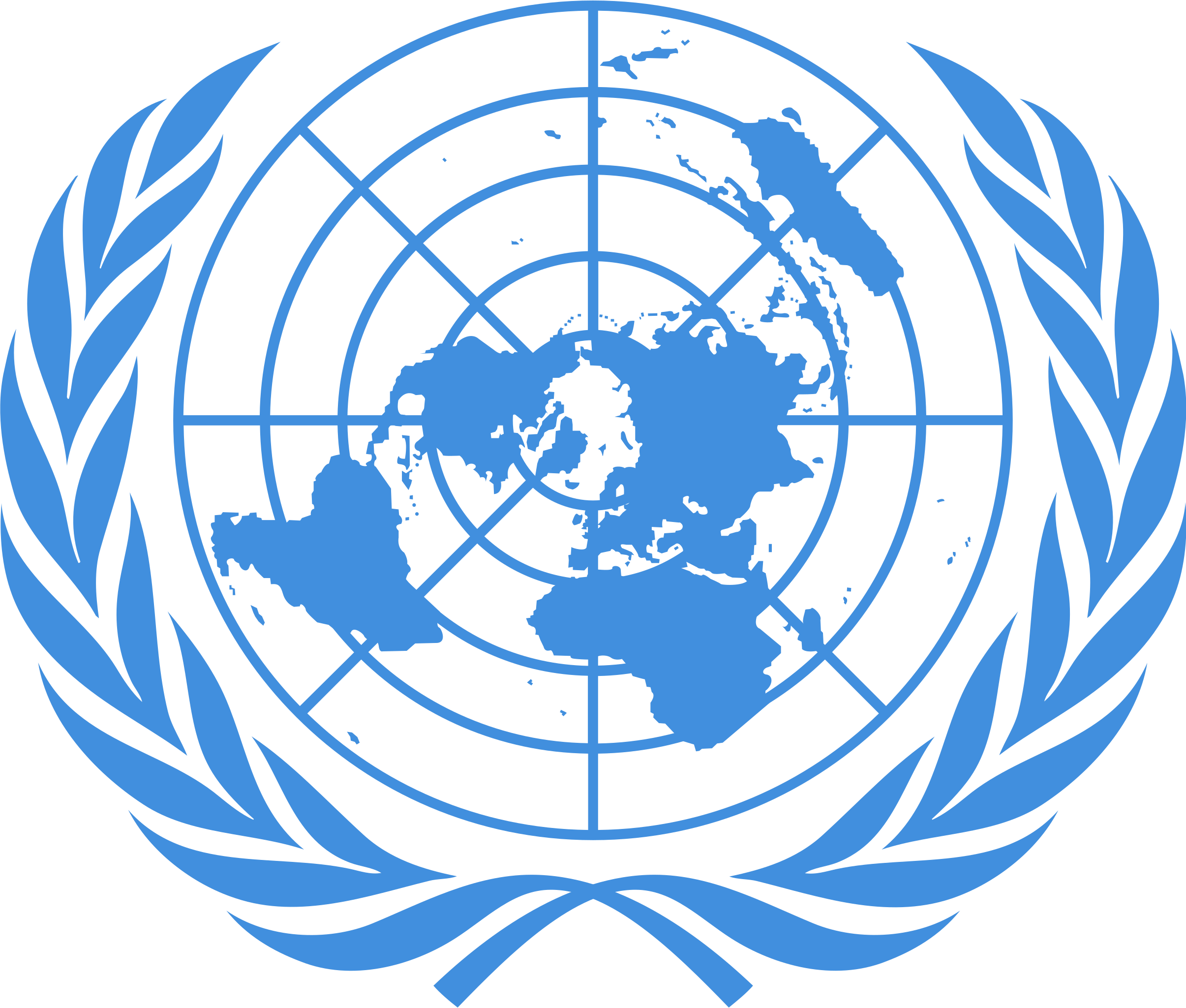 United Nations
United Nations
 United Nations Security Council
United Nations Security Council
 Hydrogen bomb
Hydrogen bomb

Die Volksrepublik China (chinesisch 中华人民共和国, Pinyin Zhōnghuá Rénmín Gònghéguó ![]() [tʂʊŋ˥xua˧˥ʐɛn˧˥mɪn˧˥kʊŋ˥˩xə˧˥kuɔ˧˥]), allgemein als China bezeichnet, ist ein am 1. Oktober 1949 gegründeter sozialistischer Staat in Ostasien. Mit rund 1,4 Milliarden Einwohnern stellt China das bevölkerungsreichste und gemessen an seiner Gesamtfläche das viertgrößte Land der Erde dar.[7]
[tʂʊŋ˥xua˧˥ʐɛn˧˥mɪn˧˥kʊŋ˥˩xə˧˥kuɔ˧˥]), allgemein als China bezeichnet, ist ein am 1. Oktober 1949 gegründeter sozialistischer Staat in Ostasien. Mit rund 1,4 Milliarden Einwohnern stellt China das bevölkerungsreichste und gemessen an seiner Gesamtfläche das viertgrößte Land der Erde dar.[7]
Gemäß ihrer Verfassung steht die Volksrepublik China „unter der demokratischen Diktatur des Volkes“, wird jedoch seit 1949 autoritär von der Kommunistischen Partei Chinas (KPCh) regiert. Wirtschaftlich weist China seit vielen Jahren eine hohe Dynamik auf. Auf Grundlage ihrer Reform- und Öffnungspolitik entwickelte sich China beginnend ab 1978 zu einer wirtschaftlichen und technologischen Großmacht.[8] Von der Weltbank wird das Land seit 2016 zu den Staaten mit einem Einkommensniveau im oberen Mittelfeld gerechnet. Seit 2010 ist China der Staat mit der umfangreichsten Warenausfuhr und gemessen an der Kaufkraftparität seit 2016 die größte Volkswirtschaft der Welt. Das jährliche Wirtschaftswachstum lag zwischen 2010 und 2017 im Durchschnitt bei 6,7 Prozent.[9]
Die Volksrepublik China zählt zu den offiziellen Atommächten, ist ständiges Mitglied des Weltsicherheitsrates sowie unter anderem Mitglied der Welthandelsorganisation, Weltbank, APEC, ASEAN, BRICS, UNESCO, Interpol, G20.
中华人民共和国,通称中国[13],是位于东亚的社会主义国家,首都位于北京[14]。中国领土陆地面积约960万平方千米,是世界上纯陆地[注 13]面积第二大、陆地[注 14]面积第三大、总面积第三大或第四大的国家[注 15][15],其分为23个省份[注 16]、5个自治区、4个直辖市和2个特别行政区。被视为亚洲地区重要地域大国,也被视为潜在超级大国[16][17][18]。是世界上人口最多的国家,约有13.9亿人[8],同时也是一个多民族国家,共有已确认的民族56个,其中汉族人口占91.51%[19]。以普通话和规范汉字为国家通用语言文字,少数民族地区可使用自己民族的语言文字。
中国地势西高东低而呈现三级阶梯分布,大部分地区属于温带、副热带季风气候,地理景致与气候型态丰富多样,有冰川、丹霞、黄土、沙漠、喀斯特等多种地貌[20],北方有干草原和荒漠,南方有热带雨林,西部和西南边境则有天山山脉、帕米尔高原、喀喇昆仑山脉和喜马拉雅山脉。东临太平洋,领海由渤海(内海)以及黄海、东海、南海三大边海组成[21],水域面积约470万平方千米,分布有大小岛屿7600个[22]。
科技方面,中国在航天航空、高速铁路、新能源、核技术、超级计算机、量子网络等领域有较强实力,研发经费则位居世界第二[23]。国防预算为世界第二高,拥有世界规模最大的常备部队及三位一体的核打击能力[24][25]。自1986年实行九年义务教育制度,就读公立学校的学生由政府提供其间学费。1978年改革开放后,中国成为经济增长最快的经济体之一[26][27]。当前,中国对外贸易额世界第一,是世界上最大的商品出口国及第二大的进口国,依国内生产总值按购买力平价位列世界第一、而国际汇率则排名世界第二[28]。2017年,中国人均国内生产总值依购买力平价为18,119美元,列全球第76位;依国际汇率则为8,643美元,列全球第72位,均尚低于世界水平[10]。改革开放以来,尽管贫困问题得到极大改善,但收入差距较大,且区域间发展不均——东部沿海地区的经济较中西部及东北地区发达——的问题仍极需解决[29][30]。
1949年中国共产党在内战中取得优势,终结了中国国民党在中国大陆的统治,于同年10月1日建立了中华人民共和国中央人民政府,并与退守台湾地区的中华民国政府形成两岸分治的政治格局。遵循和平共处五项原则的外交政策,在1971年取得在联合国的中国代表权后,成为联合国安全理事会常任理事国并加入了许多国际组织。
中華人民共和国(ちゅうかじんみんきょうわこく、簡体字: 中华人民共和国、繁体字: 中華人民共和國、拼音: 、英語: People's Republic of China, PRC)、通称中国(ちゅうごく、拼音: 、英語: China)は、東アジアに位置する主権国家。首都・北京市を政庁所在地とし、13億8千万人以上の人口で世界一人口が多い国でもある。
中華人民共和国憲法第一条で社会主義国家であることを明言しており、政治は中国共産党が指導的地位を有するヘゲモニー政党制を採用している[4]。
中華人民共和国は、中華民国統治下の中国で1921年に結党された中国共産党が、ソビエト連邦の支援を受けながら国共合作・抗日戦争(八路軍・新四軍)・国共内戦を経て国民政府を台湾島へ放逐[5]し、1949年10月1日に北京市で建国式典(中華人民共和国開国大典)を開催したことで成立した。
同国は国共内戦の延長で1954年に「台湾解放宣言」[6]を出し、第一次台湾海峡危機(1954年~1955年)と金門砲戦(1958年~1979年)を起こしたが武力による台湾占領には至らなかった。同国は2010年代に入ると一つの中国による台湾問題の解決を「(自国の)核心的利益の一つ」と規定するようになり、基本的には九二共識の合意に基づいた平和的な中国統一を目指しているが、一方で人民解放軍の武力による台湾制圧の可能性も指摘されている[7]。
計測方法によるが、同国は陸地面積では世界第2位[8]、総面積では世界第3位又は第4位である。同国の地形は、乾燥した北の森林ステップ、ゴビ砂漠、タクラマカン砂漠から、多湿な南の亜熱帯の森林まで広大かつ多様である。ヒマラヤ山脈、カラコルム山脈、パミール高原、天山山脈により、同国は南及び中央アジアから切り離されている。長さ世界第3位の長江及び同世界第6位の黄河は、チベット高原から人口密度の高い東の沿岸地域に流れ、古代には黄河文明や長江文明を興してきた。同国の太平洋に沿った海岸線は14,500kmの長さで、渤海、黄海、東シナ海、南シナ海に囲まれている。同国の国土は、22省級行政区、5自治区、北京市・天津市・上海市・重慶市の4直轄市、大部分が自治的な香港・マカオの2特別行政区によって構成されている。
中国は、繁栄と衰退の繰り返しだと考えられる過去2000年間の大部分で世界最大かつ最も複雑な経済を有した[9][10]。1978年における改革開放の導入以来、外資流入の勢いが増してゆき、産業構造が政策から転換して、中国は世界で最も成長率が高い主要経済大国の1つになった(#経済)。ソ連の純粋な社会主義体制と距離をとり、「経済面は有限な資本主義、政治面は一党独裁を守る」のような国家形態に変更したのである(中国特色社会主義)。
2016年時点で、同国は名目GDP及び貿易輸入額のいずれにおいても世界第2位であり(2014年には国際通貨基金・世界銀行・CIAワールドファクトブックによると購買力平価は世界最大のGDPとなった[11][12][13])、購買力平価GDPと貿易輸出額は世界一位である[14]。同国は核保有国に認められ、世界第2位の防衛予算で世界最大の常備軍を有する。中華人民共和国は1971年以来国際連合加盟国であり、中華民国の後任として安全保障理事会常任理事国である。中国は多数の公式及び非公式の多国間機構加盟国であり、WTO、APEC、BRICs、上海協力機構、BCIM、G20がこれに該当する。中国はアジアの地域大国であり、多数の解説者により潜在的な超大国として特徴付けられてきた[15][16]。なお2017年7月現在、中華人民共和国の世界遺産はイタリアについで52件ある。国内には文化遺産が22件、自然遺産が4件、複合遺産が4件存在する。
China, officially the People's Republic of China (PRC), is a country in East Asia and the world's most populous country, with a population of around 1.404 billion.[13] Covering approximately 9,600,000 square kilometers (3,700,000 sq mi), it is the third- or fourth-largest country by total area.[k][19] Governed by the Communist Party of China, the state exercises jurisdiction over 22 provinces, five autonomous regions, four direct-controlled municipalities (Beijing, Tianjin, Shanghai, and Chongqing), and the special administrative regions of Hong Kong and Macau.
China emerged as one of the world's earliest civilizations, in the fertile basin of the Yellow River in the North China Plain. For millennia, China's political system was based on hereditary monarchies, or dynasties, beginning with the semi-legendary Xia dynasty in 21st century BCE.[20] Since then, China has expanded, fractured, and re-unified numerous times. In the 3rd century BCE, the Qin reunited core China and established the first Chinese empire. The succeeding Han dynasty, which ruled from 206 BC until 220 AD, saw some of the most advanced technology at that time, including papermaking and the compass,[21] along with agricultural and medical improvements. The invention of gunpowder and movable type in the Tang dynasty (618–907) and Northern Song (960–1127) completed the Four Great Inventions. Tang culture spread widely in Asia, as the new Silk Route brought traders to as far as Mesopotamia and Horn of Africa.[22] Dynastic rule ended in 1912 with the Xinhai Revolution, when a republic replaced the Qing dynasty. The Chinese Civil War resulted in a division of territory in 1949, when the Communist Party of China established the People's Republic of China, a unitary one-party sovereign state on Mainland China, while the Kuomintang-led government retreated to the island of Taiwan. The political status of Taiwan remains disputed.
Since the introduction of economic reforms in 1978, China's economy has been one of the world's fastest-growing with annual growth rates consistently above 6 percent.[23] As of 2016, it is the world's second-largest economy by nominal GDP and largest by purchasing power parity (PPP).[24] China is also the world's largest exporter and second-largest importer of goods.[25] China is a recognized nuclear weapons state and has the world's largest standing army and second-largest defense budget.[26][27] The PRC is a permanent member of the United Nations Security Council as it replaced the ROC in 1971, as well as an active global partner of ASEAN Plus mechanism. China is also a leading member of numerous formal and informal multilateral organizations, including the Shanghai Cooperation Organization (SCO), WTO, APEC, BRICS, the BCIM, and the G20. In recent times, China has been widely characterized as a global superpower.[28][29][30]
La Chined, en forme longue la république populaire de Chine (ou République populaire de Chinee, RPC, chinois simplifié : 中华人民共和国 ; chinois traditionnel : 中華人民共和國 ; pinyin : , prononcé [tʂʊŋ˥xua˧˥ɻən˧˥mɪn˧˥kʊŋ˥˩xə˧˥kuɔ˧˥] Écouter), parfois appelée Chine populaire, est un pays d'Asie de l'Est. Avec près d'1,4 milliard d'habitants, soit environ un sixième de la population mondiale, elle est le pays le plus peuplé du monde6. Elle compte huit agglomérations de plus de dix millions d'habitants, dont la capitale Pékin,
 Geography
Geography